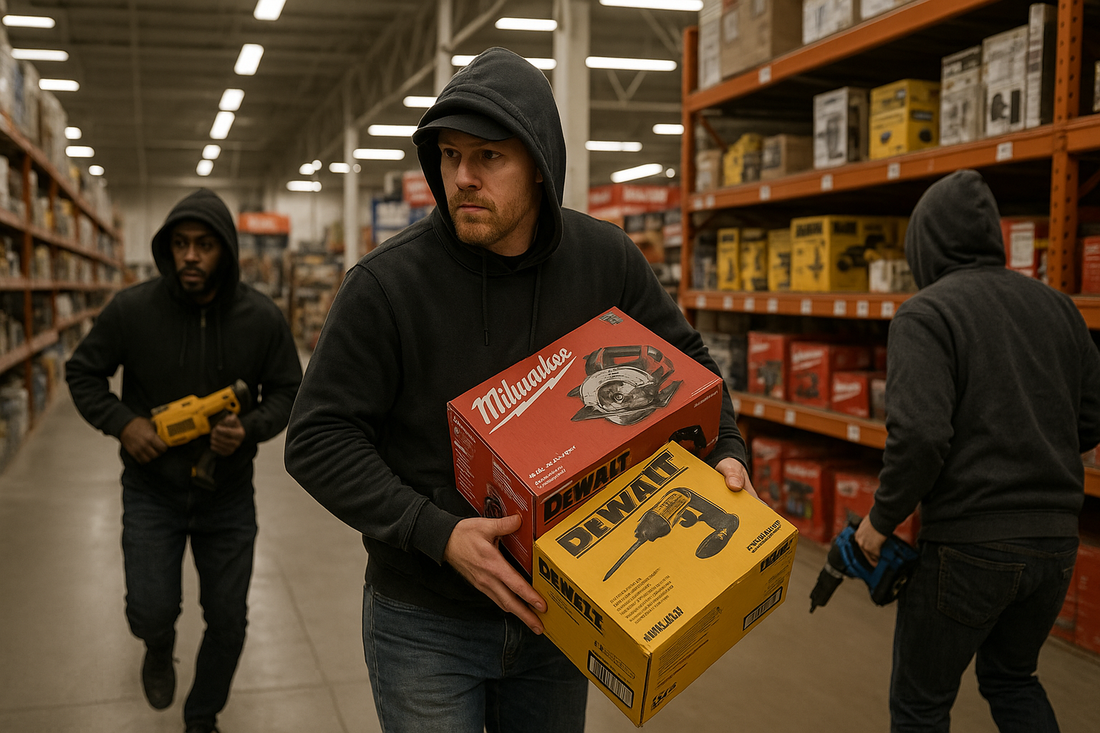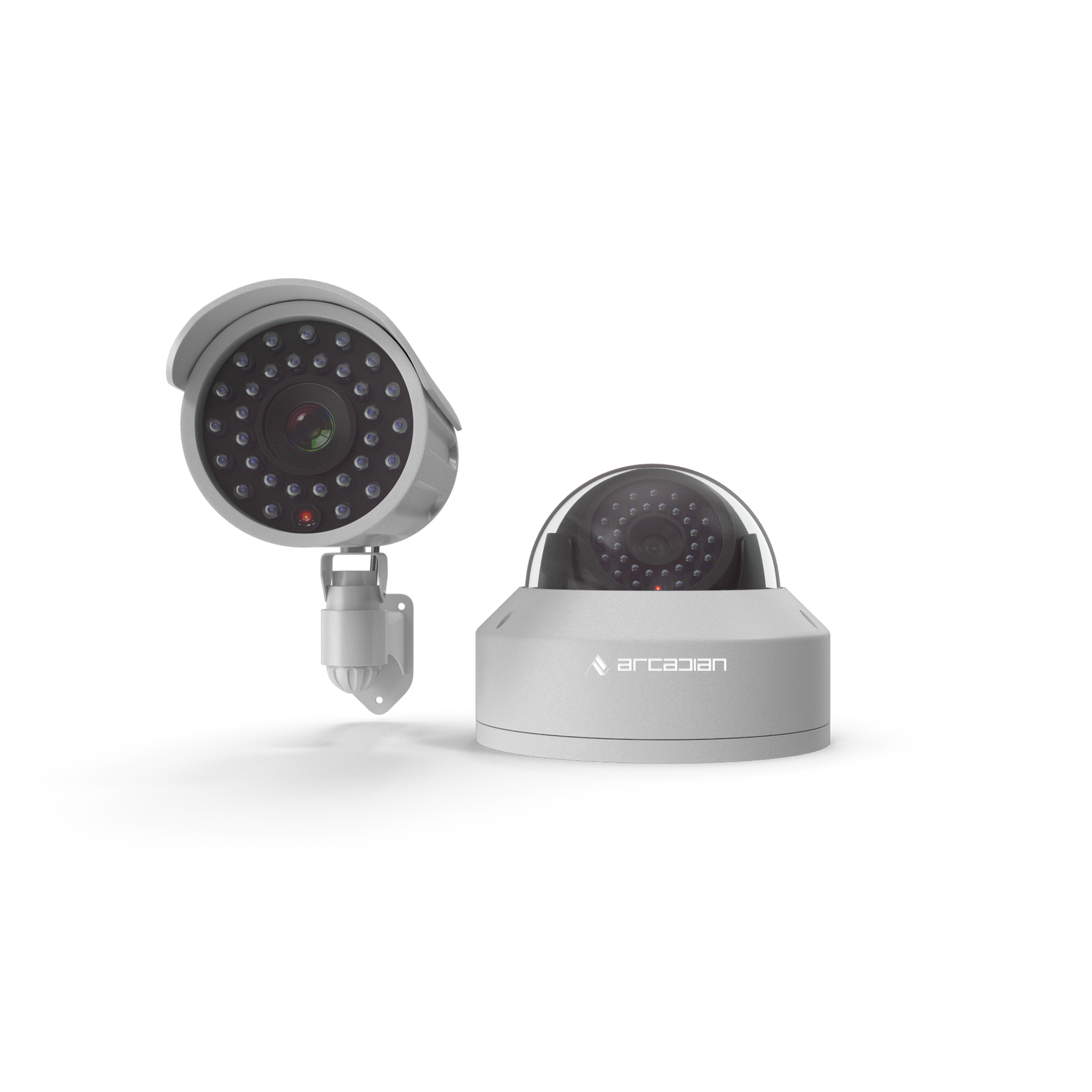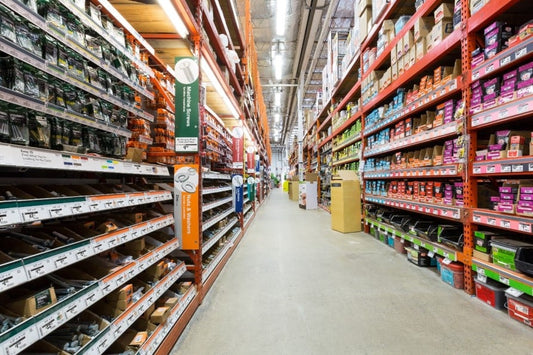The Misperception of Shrink and Its Impact on Organized Retail Crime
Retail shrink is often misunderstood and misused as a proxy for theft. In reality, shrink is a broad accounting metric, while organized retail crime operates far outside its limits. This post unpacks the misconception and shows why dynamic, AI-powered surveillance like ArcadianAI’s Ranger is the only way forward.

Introduction
In 2024, U.S. retailers reported more than $112 billion in inventory losses — a figure often cited as evidence of surging theft and organized retail crime (ORC)【Statista, 2024】. Yet critics argue these numbers are inflated, pointing to “shrink” as a catch-all excuse. This misperception is not only inaccurate — it’s dangerous.
Shrink, or inventory shrinkage, is simply the gap between book inventory and physical counts. It includes theft, but also damages, spoilage, administrative errors, vendor fraud, and accounting anomalies. To equate shrink directly with theft — and therefore dismiss ORC as exaggerated — is to misunderstand retail economics and undercut the urgency of real threats.
ArcadianAI understands this divide. While competitors like Verkada, Genetec, Milestone, Eagle Eye Networks, and Rhombus focus on static video or aggregated metrics, ArcadianAI’s Ranger leverages adaptive AI to separate real theft signals from background noise. This clarity is what retailers — from Walmart to CVS — need to respond effectively.
Organized retail crime is not a line item on a P&L. It’s a coordinated, multi-billion-dollar threat that exploits blind spots in both human perception and accounting measures. And the longer leaders mistake shrink for theft, the more ground ORC gains.
Quick Summary / Key Takeaways
-
Shrink ≠ theft — it’s an accounting measure.
-
ORC operates beyond shrink, often untracked in P&Ls.
-
The “denominator effect” hides theft in high-sales retailers.
-
Static shrink data cannot expose ORC patterns.
-
ArcadianAI Ranger turns raw video into actionable theft intelligence.
Background & Relevance
Why this matters now:
-
The FBI reported a 30% increase in organized retail theft rings between 2020 and 2024【FBI, 2024】.
-
NRF stopped publishing average shrink rates in 2023, acknowledging that shrink no longer accurately reflected theft trends.
-
Retail CEOs from Target, Walmart, Walgreens, and Home Depot have testified before Congress that ORC-driven theft is rising in both frequency and violence, even while shrink rates appear “flat.”
This disconnect is precisely why shrink must be separated from theft. Misreading shrink not only masks ORC’s scale, but also gives policymakers and skeptics room to downplay real, documented losses.
Core Topic Exploration
What is shrink — and why is it misunderstood?
Shrink measures the difference between expected inventory and actual counts. But shrink is too broad to equate with theft. It includes:
-
External theft: shoplifting, ORC grab-and-runs.
-
Internal theft: employee theft, collusion.
-
Vendor fraud: short shipments, false invoicing.
-
Operational losses: mis-scans, pricing errors.
-
Product issues: spoilage, expiration, damages.
For example, Kroger may count spoilage of fresh produce as shrink, while Best Buy counts returns fraud and broken TVs. The “shrink percentage” doesn’t tell lawmakers whether the loss came from a gang smashing glass cases in San Francisco or a mis-keyed inventory count in Dallas.
Why doesn’t shrink reflect ORC?
Because much of ORC doesn’t even touch shrink numbers. Consider:
-
Cargo theft — Stolen trailers of Nike apparel in transit never enter inventory, so they bypass shrink entirely.
-
Gift card fraud — ORC groups resell fraudulently obtained prepaid cards. Losses are logged in financial chargebacks, not shrink.
-
Return fraud — Fake receipts, counterfeit barcodes, and stolen goods “returned” for cash are often filed under promotional or accounting adjustments.
Shrink ≠ theft ≠ ORC. Treating them as identical is sloppy — and costly.
How the “Denominator Effect” hides theft
Sales volume distorts shrink percentages.
-
Walmart — $600B in sales means even a $2B theft loss appears as only ~0.3% shrink.
-
Nordstrom — $15B in sales means a $500M theft loss is ~3.3% shrink.
Both retailers lost staggering sums, but one appears “low shrink” while the other looks “high shrink.” ORC gangs don’t care about denominators — they care about weak points.
Case Studies: When shrink fails as a theft signal
-
Target, 2023 — Reported “stable shrink” but disclosed $1.3B in theft-driven losses, citing increased ORC and violent incidents.
-
Walgreens, 2022 — Publicly admitted shrink metrics “overstated theft” — then reversed course after closing high-loss San Francisco stores.
-
Home Depot, 2024 — Announced rising “organized groups stealing power tools” even though shrink percentage appeared unchanged.
Each case shows the same pattern: stable shrink, rising ORC.
Why static systems make it worse
Legacy security platforms — NVRs, VMS, and VSaaS like Verkada and Eagle Eye — fail because they:
-
Treat video as storage, not intelligence.
-
Can’t separate theft signals from spoilage or mis-scans.
-
Lack adaptive AI to detect ORC behaviors across multiple stores.
ArcadianAI Ranger flips this model. It doesn’t wait for shrink reports — it flags ORC behaviors in real time: coordinated entries, suspicious dwell times, rapid sweep patterns. This turns shrink’s blind spots into evidence-grade signals.
Comparisons & Use Cases
| Feature / Metric | Shrink (Accounting) | Legacy VMS (Genetec, Milestone) | Cloud VSaaS (Verkada, Eagle Eye) | ArcadianAI Ranger |
|---|---|---|---|---|
| Tracks theft directly? | ❌ No | ❌ No | ❌ Partial (motion analytics) | ✅ Yes (adaptive AI) |
| Includes non-theft losses? | ✅ Yes | ❌ No | ❌ No | ❌ No |
| Detects ORC coordination? | ❌ No | ❌ No | ❌ No | ✅ Yes |
| Real-time alerts? | ❌ No | ✅ Limited | ✅ Limited | ✅ Adaptive alerts |
| Multi-store intelligence? | ❌ No | ❌ No | ❌ Cloud storage only | ✅ Yes (cross-location) |
| ROI on theft reduction | ❌ None | ⚠️ Low | ⚠️ Moderate | ✅ High |
Bottom line: Shrink is an accounting tool, not a theft detector. Legacy systems see but don’t interpret. ArcadianAI Ranger turns video into theft intelligence, bridging the gap.
Common Questions (FAQ)
Q1. Is shrink the same as theft?
No. Shrink includes damages, spoilage, errors, and fraud — not just theft.
Q2. Why do some argue ORC losses are exaggerated?
Because they wrongly equate shrink with theft. ORC losses are often hidden in other P&L categories.
Q3. How do high-volume retailers mask theft?
Through the “denominator effect” — billions in sales make theft look small in percentage terms.
Q4. What’s the biggest blind spot in shrink reporting?
Supply chain theft and fraud schemes like gift card scams — they rarely show up in shrink.
Q5. How does ArcadianAI help?
Ranger detects theft and ORC patterns in real time, across multiple stores, separating theft signals from shrink noise.
Conclusion & CTA
Shrink has value — but only as a broad inventory measure. Using it to downplay organized retail crime is a dangerous miscalculation. ORC is growing more violent, more coordinated, and more costly, while shrink metrics stay “stable” and misleading.
Retailers need adaptive AI to see theft as it really is. ArcadianAI’s Ranger doesn’t just track shrink — it illuminates the hidden patterns behind ORC, giving retailers and law enforcement actionable data instead of accounting noise.
👉 See ArcadianAI in Action → Get Demo – ArcadianAI
Security Glossary (2025 Edition)
Administrative Error — Mistakes in pricing, scanning, or counting that reduce inventory accuracy.
ArcadianAI Ranger — Adaptive AI surveillance platform that converts raw video into real-time theft intelligence.
Cargo Theft — The stealing of goods from supply chains before they reach retail inventory.
Denominator Effect — When high sales volume lowers shrink percentages, masking actual theft losses.
Employee Theft — Internal theft by staff, including collusion with ORC groups.
Legacy VMS (Video Management System) — Traditional software for storing and retrieving video without adaptive AI analysis.
NVR (Network Video Recorder) — Hardware system for recording surveillance video, often lacking advanced analytics.
ORC (Organized Retail Crime) — Coordinated theft rings targeting retailers for resale or fraud.
POS Fraud (Point-of-Sale Fraud) — Schemes at checkout, including return fraud and transaction manipulation.
Return Fraud — Returning stolen or counterfeit goods for cash or credit.
Shrink — Accounting measure comparing book inventory with physical counts, including theft and non-theft losses.
Spoilage — Loss of perishable goods due to expiration or damage.
Supply Chain Theft — Theft of goods in transit or before being logged as inventory.
Theft vs. Shrink — Theft is a crime-driven loss; shrink is a broader accounting metric.
Verkada, Eagle Eye, Genetec, Milestone — Competitors in VSaaS/VMS markets, often misusing “AI” without adaptive ORC detection.
VSaaS (Video Surveillance as a Service) — Cloud-based video storage and management platforms, often lacking adaptive theft analytics.

Security is like insurance—until you need it, you don’t think about it.
But when something goes wrong? Break-ins, theft, liability claims—suddenly, it’s all you think about.
ArcadianAI upgrades your security to the AI era—no new hardware, no sky-high costs, just smart protection that works.
→ Stop security incidents before they happen
→ Cut security costs without cutting corners
→ Run your business without the worry
Because the best security isn’t reactive—it’s proactive.







